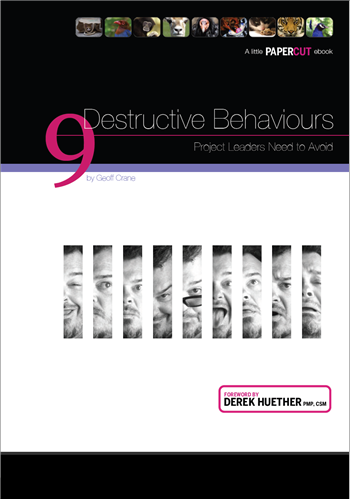choiceAB
Too many times people, including project managers, freeze like deer in the headlights when asked what their contingencies are. Rather than get all dramatic, in the event you may not get your first choice, you should know what your other choices are and assign pre-qualifying criteria to them. Be prepared to negotiate...EVERYTHING. I hate making emotional decisions. I do make them but not until after the logical decisions have been exhausted. It doesn't matter if you're trying to negotiate a new salary or deciding where you and a group may have dinner for the evening. You should know what your options are and negotiate the best outcome.
If given the choice between A or B, when I want C, I commonly abstain. This frustrates people, maybe because they are used to groupthink and they are trying to avoid conflict. Some may think I'm being passive-aggressive or an obstructionist. Actually, if I know what I want, I just won't settle (when I don't think I have to).
The PMBOK offers a few helpful negotiation points in Section G.8.
Analyze the situation.
Differentiate between wants and needs - both theirs and yours.
Focus on interests and issues rather than on positions.
Ask high and offer low, but be realistic.
When you make a concession, act as if you are yielding something of value, don't just give in.
Always make sure both parties feel as if they have won. This is a win-win negotiation. Never let the other party leave feeling as if he or she has been taken advantage of. (I don't always do this)
Do a good job of listening and articulating.
Know your choices. Don't settle.


 To give a little back on Friday, June 24, we're giving away ten (30-day) promotional PMP flashcard memberships. These will be fully functional memberships. You'll have access to all 2,000 PMP exam flashcards. You'll have access to real-time progress. The only drawback is it will only be a (30-day) promotional membership. But, if you're preparing for the ®PMP, this is your chance to save 10 bucks! (the cost of unlimited access at
To give a little back on Friday, June 24, we're giving away ten (30-day) promotional PMP flashcard memberships. These will be fully functional memberships. You'll have access to all 2,000 PMP exam flashcards. You'll have access to real-time progress. The only drawback is it will only be a (30-day) promotional membership. But, if you're preparing for the ®PMP, this is your chance to save 10 bucks! (the cost of unlimited access at 





